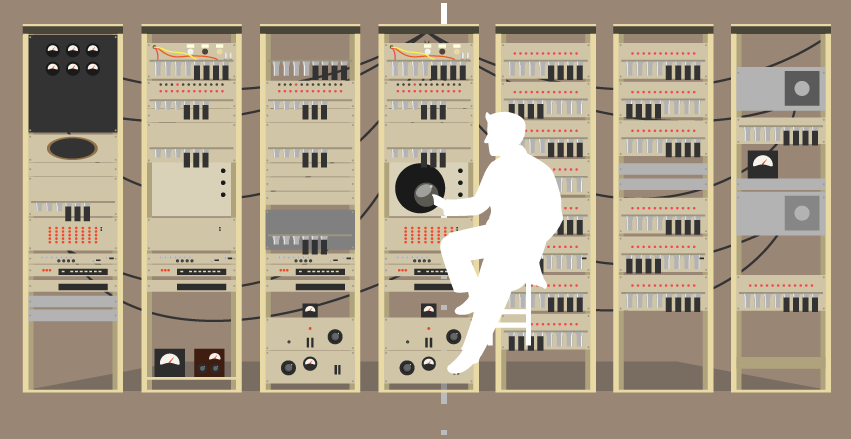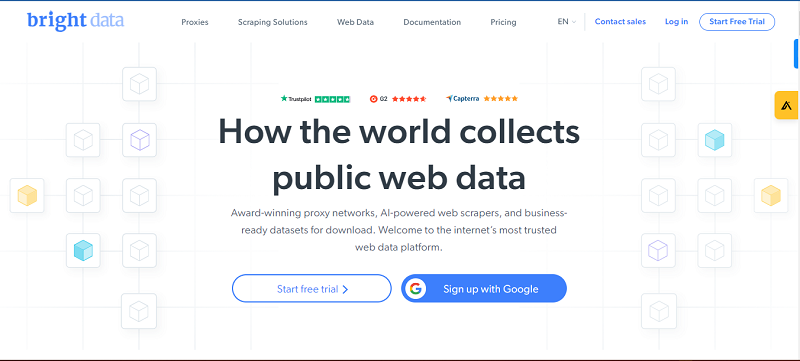From as early as the onset of modern computing, the possibility of resource distribution has been explored. Today’s cloud computing environment goes well beyond what most could even have imagined at the birth of modern computing and innovation in the field isn’t slowing.
Matillion’s interactive timeline of cloud begins with the first stored-program computer, the Manchester Baby, developed in 1947. Quickly, time sharing became necessary as the 250 computers available in 1955 were rented to users in efforts to ensure as little downtime as possible. When packet switching was introduced in 1960, the foundation for resource sharing and the internet was laid and shortly thereafter, in a speech at MIT, John McCarthy suggested that computer resources would one day be shared like any other service.

Through the ‘70s, ‘80s, and ‘90s, the world saw the development of the internet and mainstreaming of computers, and in 1996 the term cloud computing was first used by George Favaloro and Sean O’Sullivan, executives at Compaq Computer. During the 2000s mobile and smartphone technology took off and very quickly access to the cloud was common. Of course, the last five years have seen the greatest advances in cloud computing, as seemingly with all technology, it develops exponentially. Global giants such as Amazon, Google, and Apple rely heavily on the cloud, and in 2013 it was estimated global spending on cloud services reached billion.
From digital assistants to smart cars to virtual reality to the internet of things, all of the latest modernizations rely on cloud technology. But so too do most of the traditional services individuals and organizations rely on. Although we’ve seen new products and services focused on managing money, the traditional banking institutions are developing their own services and the environment is nearly unrecognizable to that of ten years ago. Who can even imagine a world without internet banking?
Healthcare similarly has advanced, and not only in the laboratories and offices of pioneering doctors and scientists. Large hospital and patient management institutions are taking up the reigns and following suit, albeit more slowly, and patient care programs are being implemented to combine the benefits of modern devices such as wearables with healthcare regimens. Already two years ago, an HIMSS Analytics survey of cloud adoption in healthcare organizations found 83% of those surveyed were using cloud services. Common uses included the hosting of clinical applications and data, health information exchange, and backup and data recovery.
And the benefits cloud computing promises education are immense. Already, cloud technology is changing the way students learn and extending access to schooling into remote and impoverished areas. Though schools and universities are adopting cloud technologies themselves, many startups such as Education Modified, Kiko Labs, and HSTRY, are coming up with new methods and platforms which enhance and further learning.
It’s predicted that the cloud service market will be worth around $108 billion next year, and by 2020 the number of connected devices worldwide is expected to reach 25 billion. Further estimates suggest cloud computing offers green benefits too, and US organizations moving to the cloud before 2020 will save $12.3 billion in energy costs. Gartner points to a hybrid cloud infrastructure in the coming years, and says Ed Anderson, “I start to think of a multi-cloud environment as a foundation for a next wave of applications.” And according to Forrester Research, we’re on the cusp of the second wave of cloud computing, with service providers focused on next-gen applications that require omnichannel support, time-based analytics, and micro service support. The barrier to entering the cloud seems likely to shrink significantly due to adjusted compliance requirements and regulations, and although security already is a primary focus, with the expansion of cloud, its importance will be magnified. Finally, due to the high demand for cloud services, Service Providers will soon, if not already, be building next-generation architecture on hyper-converged platforms further reducing maintenance costs and speeding up scalability.
By Jennifer Klostermann





